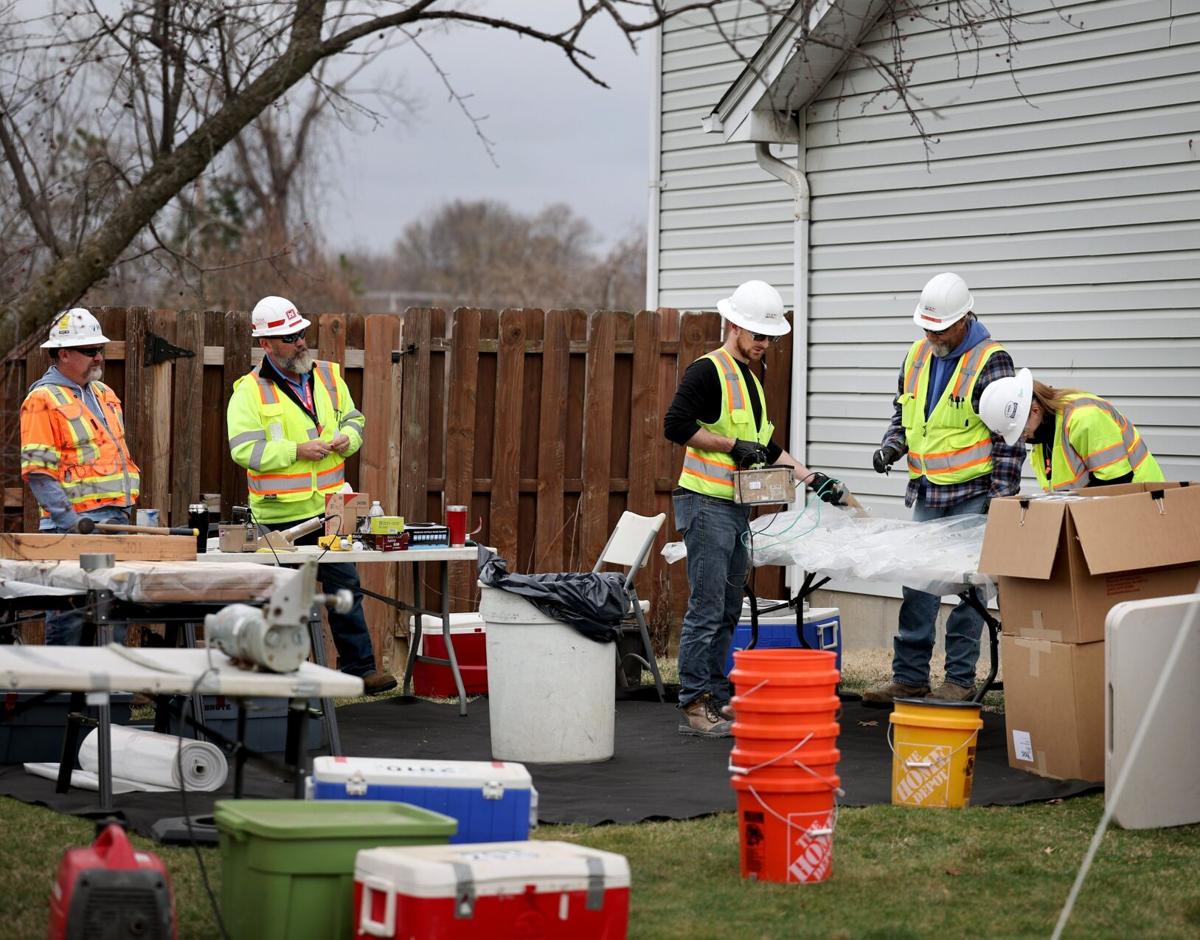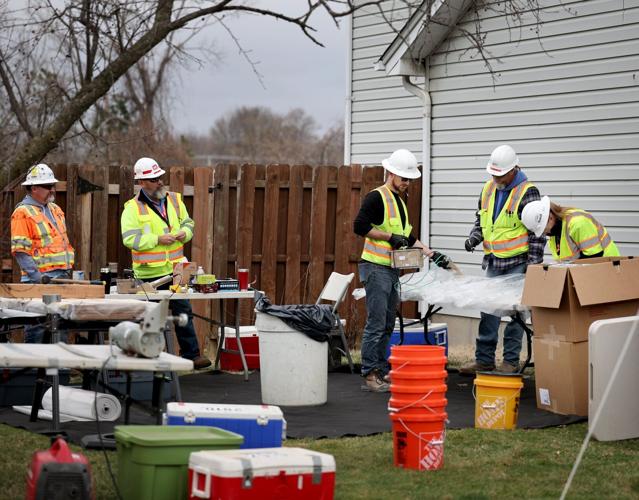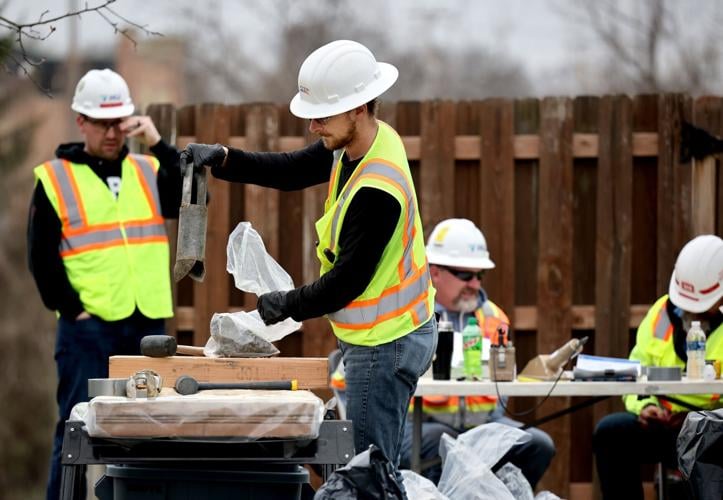FLORISSANT — As the Army Corps of Engineers and its contractors drilled holes into foundations and took soil samples from underneath homes Tuesday, officials sought to reassure residents that the radioactive contamination they’re looking for doesn’t pose a threat — largely because it is buried 12 to 16 feet deep, below the surface of the ground.
The assurances came a day after the Corps announced that decades-old radioactive contaminants along the suburban banks of Coldwater Creek might extend beneath some Florissant homes on Cades Cove, a dead-end street adjacent to the waterway.
Residents here are skeptical.
Gina and Brian McNabb live right next to Tuesday’s testing activities. Even after a recent visit from the Corps, they said they felt largely uninformed about the work and — despite official reassurances — felt an unsettling sense of uncertainty about any potential health risks or hazards.
People are also reading…
“Are they not telling us the whole story or do they not have enough information?” Brian McNabb said. “All I can do is wait and see what happens.”

Workers testing for possible radiation in the soil along Coldwater Creek prepare to take core samples from under the foundation of a house on Cades Cove Road in Florissant on Tuesday, March 5, 2024.
Corps officials said that residents there have known about potential radioactivity beneath their creekside backyards since 2019, and that testing efforts have confirmed the presence of contamination on six properties along Cades Cove.
But the testing campaign — and its newly mapped discoveries of contamination — have gradually drawn investigators closer to some homes, and just in the last couple months or so, testing has suggested that the contaminants might extend under four homes on the street.
Residents of those homes that could sit atop the contaminants have been informed, the Corps said, and testing efforts began last week, currently reaching beneath the first two of the houses. To access the material, personnel are drilling a four-inch hole in the floor of the basement foundation before using an auger to extract a “core” of the underlying sediment, extending 8 feet down.

Workers prepare core samples for radiation testing after they were drilled from under the foundation of a home on Cades Cove Road in Florissant on Tuesday, March 5, 2024. The workers were testing soil from homes along Coldwater Creek.
“There’s nothing confirmed under any homes yet,” said Robin Parks, a lead engineer for the ӣ����Ƶ District of the Corps. “There’s no immediate risk to any person here.”
The unease held by the McNabbs echoes other sentiments voiced throughout the area for years. Despite years of widespread testing, analysis and official assurances that known contamination along the waterway “does not pose a health risk if left undisturbed,” plenty of people in the community remain concerned — and point to high rates of cancers in areas along the creek.
And now, the announcement about the new possible extent of the contamination adds to the long history of radioactive waste issues in north ӣ����Ƶ County. Concerns surrounding both Bridgeton’s West Lake Landfill Superfund site and areas situated along Coldwater Creek have festered for years, spiking whenever fresh examples or suspicions of contamination emerge.
The Corps’ extension of radioactive testing efforts beneath homes is a first along Coldwater Creek, although it joins other high-profile instances of the work reaching into public areas. For example, contamination has been confirmed in another residential swath of yards in a subdivision northeast of Lindbergh Boulevard and Interstate 270 and on the creek bank of the now-closed Jana Elementary School, which the Corps says could safely “be used for anything.”
The ӣ����Ƶ area’s legacy of radioactive waste issues ultimately traces back to the dawn of the nuclear weapons age, when uranium for the Manhattan Project was locally refined and then improperly stored or discarded at sites in north ӣ����Ƶ County.
Some of those sites were along Coldwater Creek, which allowed radioactive contamination to be moved and deposited along the creek, thanks to both surface runoff and flood events. The contamination — most commonly thorium — binds to silt and clay particles in sediment, Parks said.
Along Cades Cove, the Corps says homes were built atop a former “meander” of the waterway decades ago, after the old part of the creek was covered with fill. Parks said that he thought the contamination was deep enough that it would not have been disturbed during the construction process.
After the ongoing steps of testing and sample analysis are done, the Corps will need to evaluate the data, compile a report about the findings, and eventually design a plan to dig up and remove the contamination, Parks said.
He said that individual property owners will ultimately get to decide whether they want the material excavated from their property or to remain in place, below ground.
The U.S. Army Corps of Engineers continues cleanup along Coldwater Creek, hauling truckloads of dirt with traces of radioactive waste from along the bank. Video by Allie Schallert, aschallert@post-dispatch.com













